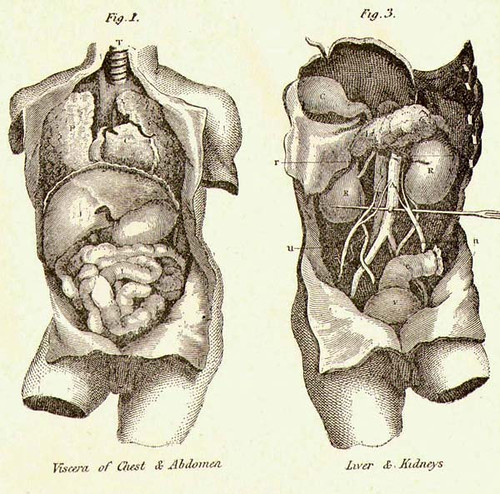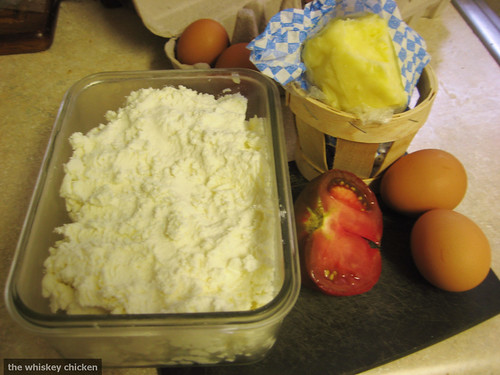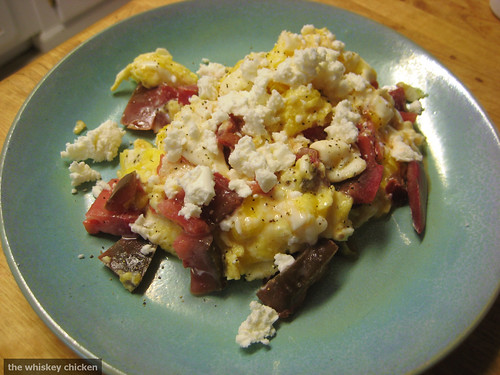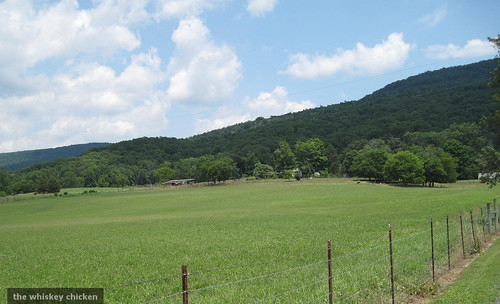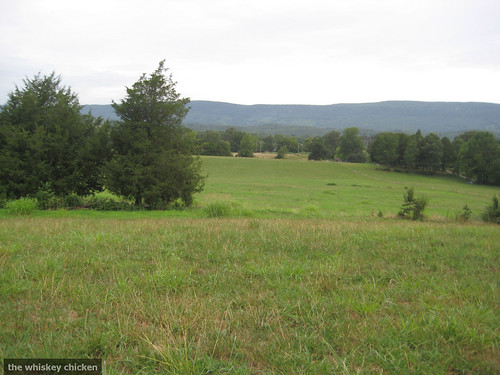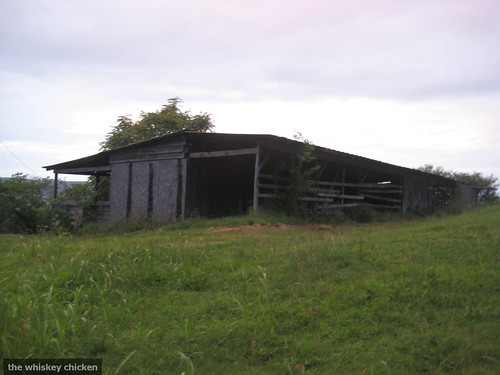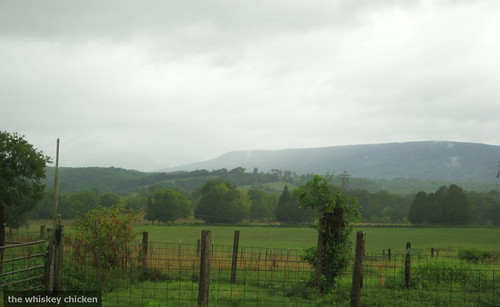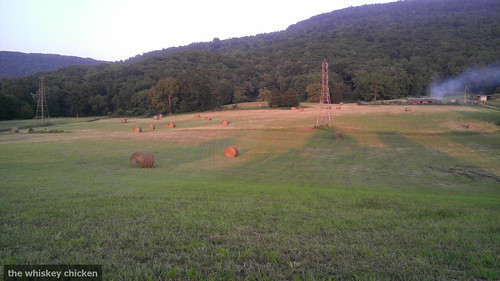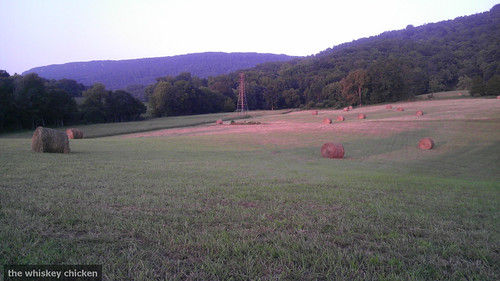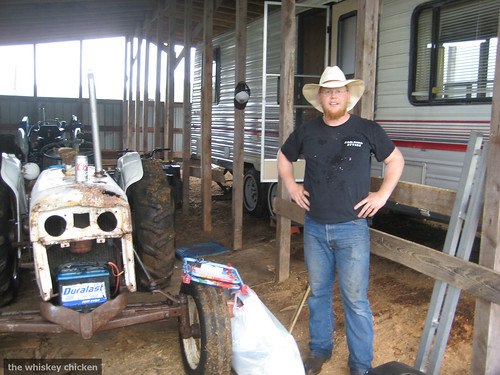So, where to begin? I suppose I should address why I took such a long hiatus from this thing. Yes, partly due to such a crazy schedule and also a whirlwind ride with the Cheese Professional certification. But too were battles with my own health. Back in early June I was diagnosed with Crohn's disease. Now, before I explain any further, I just want to make it clear that I am posting this as a way to relate my story and possibly help others, not to fish for sympathy or pity.
My entire life I have dealt with the pains of a sensitive digestive system. As a teenager, I was too self conscious to speak up about it. As a young adult, I chalked it up to a crazy schedule and stress. Later on, as the gluten free wave struck, I experimented to see if maybe that could be the answer. It seemed that no matter how healthfully I ate, or how fiercely I exercised, I never felt quite right. Always fatigued, always pain, always blah.
Then in April, I journeyed to Wisconsin not once, but twice (posts on those trips later). During which I consumed very large amounts of crackers, bread, and beer (which I had previously avoided). It was during this time I got very ill. Once again, denial took hold and I assumed I had a stomach bug. But after a couple of months of intense stomach issues, joint pain that kept me in bed for days at a time, and pain that could double me over onto the floor, I knew something was terribly wrong.
Several hospital visits and a not so awesome colonoscopy later, and the doc said I had Crohn's disease. Hmm...a disease. It is a weird feeling to be told you are diseased. Even stranger to be told it is an incurable disease that will require drugs for life and most likely several surgeries. But I didn't yet feel hopeless.
For those of you unfamiliar with Crohn's (which is probably the majority of you), it is a an autoimmune disease of the digestive system, which basically means my own immune system is attacking my (very inflamed) digestive tract. Conventional medicine suggests there is no known cause for it, and changing your diet will not affect it.
This way of thinking of course left me scratching my head. How is it that a disease of the digestive system, that system who's sole purpose is to digest your food, is not affected by...well...food? After my less than compassionate doctor pushed for low dose chemotherapy drugs given in an IV every few weeks, I decided to take matters into my own hands.
Now, I will admit that this strategy does not work for everyone. It truly depends on how sick you really are. I did accept the antibiotics and steroids they initially gave me after diagnosis, as the pain was so intense that I would do anything to feel better. But I quickly weaned myself off of them and looked for other answers. I spent a great deal of time on both the sofa and my lap top looking for them.
Enter: the GAPS/SCD diets. GAPS stands for Gut and Psychology Syndrome, SCD for the Specific Carbohydrate Diet. Both are very very similar to one another. The basic idea is to starve out the bad bacteria inhabiting your gut (contributing to all of the nasty symptoms) by cutting out all carbs, refined sugars, and grains, and supplementing with powerful foods and probiotics. Yes, that means no bread, pasta, dessert, potatoes, corn, or beer. The hope is that after a year or two on the diet, the gut, which has been ravaged thanks in part to antibiotics, birth control pills, sugar, even how you were birthed as an infant, will heal itself and regain its "normalcy". In other words, many outside of conventional medicine believe Crohn's (and many other ailments such as autism, ADHD, depression, etc.) is completely curable.
I myself have been on the diet (I have somewhat combined the two, since they are so similar) for around 4 months now, and I must say, the results are incredible. Just a few months ago I could barely walk, had the arthritis of an 80 year old woman, and had lost over 15 lbs. in just a few short weeks. I have since gained the weight back, had zero pain, and have more energy than I have had in literally years.
Is the diet hard? Well, at first, yes. Sugar and simple carbs are very addictive for the body, so it screams for them when you deny it. But after a few weeks, the cravings went away. I have found great replacements for what I truly miss (like pizza and tortillas) with nut flours, and relish in what I can have: meat, butter, eggs, wine, most cheeses, vegetables, and fruit. In many ways I am quite thankful, as I am forced to cut out all of the processed crap I knew I shouldn't be consuming anyway. But to feel this good now, it's worth every frustration. While I'm far from healed, I believe I'm on the right path.
I post this in the hopes that someone else out there that feels the way I did will read this and gain something positive from it. Go with what your gut is telling you, not what doctors want you to believe. There is always hope.
Links I have found enlightening...
http://www.westonaprice.org/digestive-disorders/how-to-restore-digestive-health
http://www.nourishingdays.com/2012/08/do-food-allergies-cause-gut-problems-or-do-gut-problems-cause-food-allergies/
http://www.nourishingdays.com/2010/04/digestion-and-elimination-understanding-the-importance-of-gut-flora/
http://www.nourishingdays.com/2011/03/what-causes-food-allergies-how-one-woman-has-reversed-hers/
http://drbenkim.com/articles-ulcerative-colitis-treatment.htm
